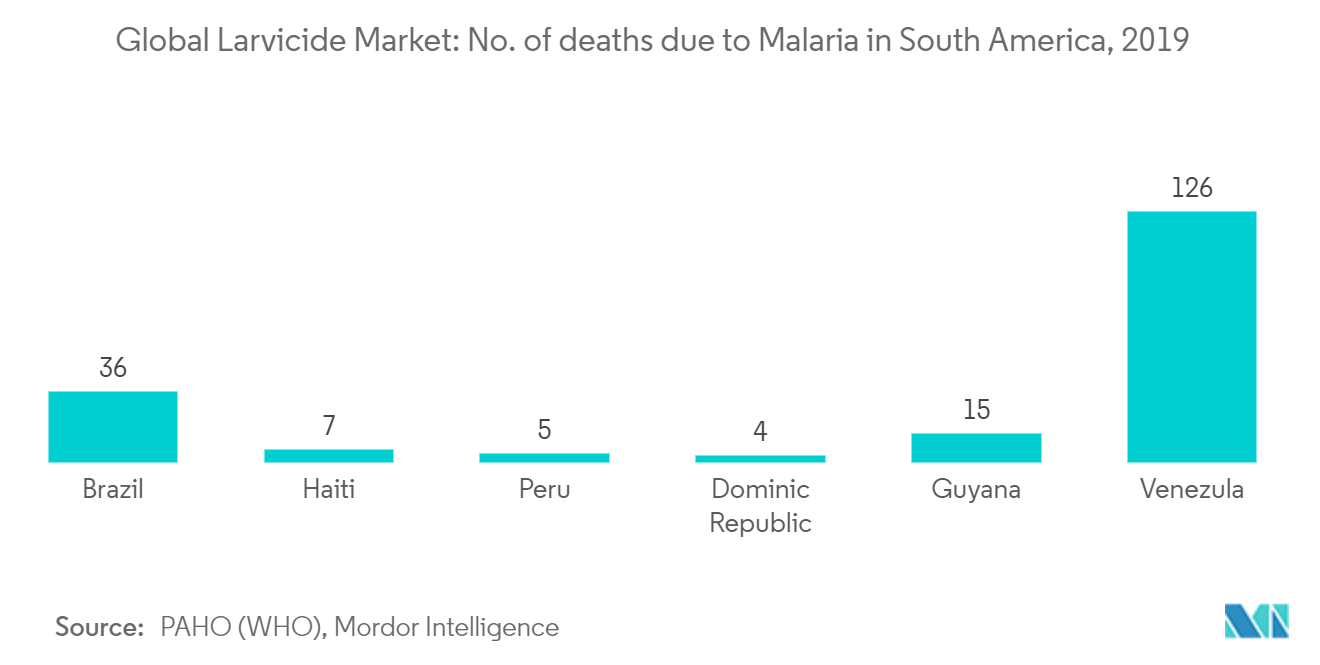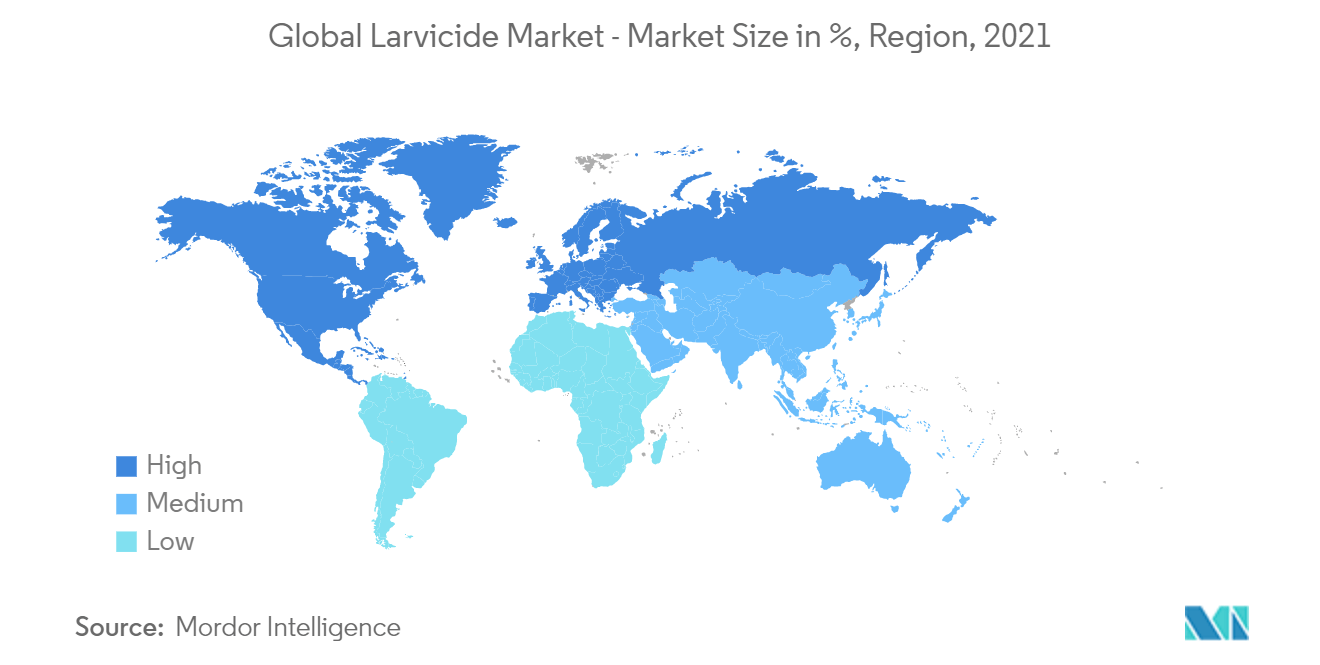Market Trends of Larvicides Industry
This section covers the major market trends shaping the Larvicides Market according to our research experts:
Mosquito-borne Diseases Drive the Larvicides Market
Mosquito-borne diseases have become devastating in most countries, such as South America. Venezuela reported 126 deaths in 2019 due to malaria. Deadly diseases such as malaria, chikungunya, and dengue can be managed by larvicide. For example, the disease outbreaks such as the Zika virus have made the European region more susceptible to the spread of mosquito populations. Sub-Saharan Africa, the Middle-East, Latin America, Asia, and several parts of Europe are malaria-affected regions. Thus, the concerns about increasing dengue and malaria cases create an opportunity for the larvicides market in the target region. Additionally, government spending in the developing sector and the involvement of multinational companies drive the larvicides market.
Factors such as the increasing prevalence of vector-borne diseases, epidemics, climatic changes, rising pest population, and ecological sustainability are driving the market's growth.

North America Dominates the Market
North America is estimated as the largest consumer due to the presence of many multinational companies in the region. The US and Canadian markets are huge due to effective surveillance and vector control programs. North America accounted for the largest share in 2017, followed by Europe. Asia-Pacific is projected to record the highest CAGR due to the spread of mosquito-borne diseases. High urbanization and rising public intolerance of pests are anticipated to fuel the larvicides market in the future.
Liquid larvicide products are applied directly to water using sprayers. Tablet, pellet, granular, and briquet formulations of larvicides are also widely applied by mosquito controllers to breeding areas. In the United States, the Environment Protection Agency (US EPA) registered three major types of larval control agents, i.e., microbial larvicides, insect growth inhibitors, and chemical insecticides (mainly temephos). Bacillus thuringiensis israelensis (Bti) is a naturally occurring soil bacterium that can effectively kill mosquito larvae present in water. Aquabac, Teknar, Baltimore, and Vectobac are some of the commercially available Bti strains.

